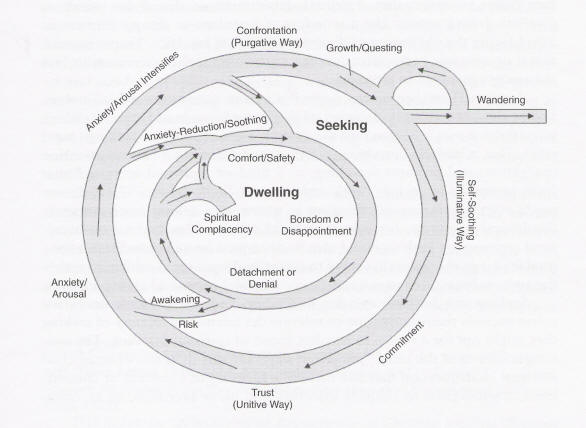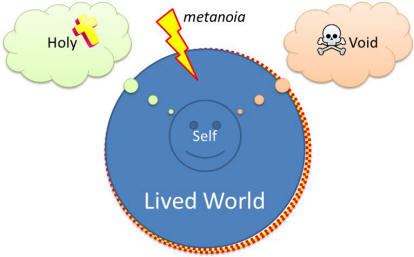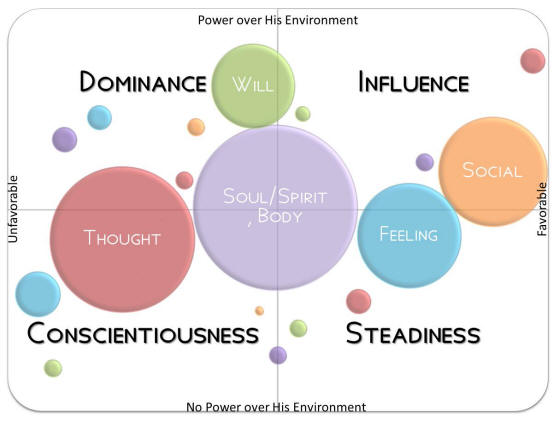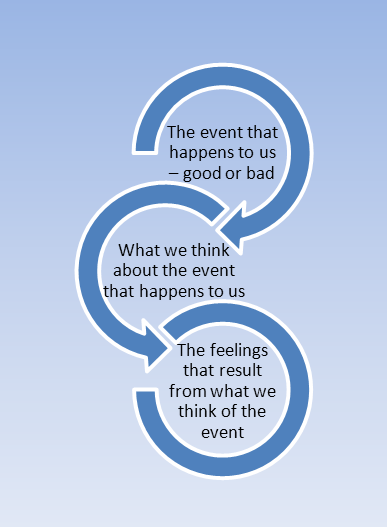
Alex Tang
Articles
- General
- Theology
- Paul
- Karl Barth
- Spiritual Formation
- Christian Education
- Spiritual Direction
- Spirituality
- Worship
- Church
- Parenting
- Medical
- Bioethics
- Books Reviews
- Videos
- Audios
- PhD dissertation
Spiritual writing
- e-Reflections
- Devotions
- The Abba Ah Beng Chronicles
- Bible Lands
- Conversations with my granddaughter
- Conversations with my grandson
- Poems
- Prayers
Nurturing/ Teaching Courses
- Sermons
- Beginning Christian Life Studies
- The Apostles' Creed
- Child Health and Nutrition
- Biomedical Ethics
- Spiritual Direction
- Spiritual Formation
- Spiritual formation communities
- Retreats
Engaging Culture
- Bioethics
- Glocalisation
- Books and Reading
- A Writing Life
- Star Trek
- Science Fiction
- Comics
- Movies
- Gaming
- Photography
- The End is Near
My Notebook
My blogs
- Spiritual Formation on the Run
- Random Musings from a Doctor's Chair
- Random Sermons from a Doctor's Chair
- Random Writings from a Doctor's Chair
- Random Spirituality from a Doctor's Chair
Books Recommendation
---------------------
Medical Students /Paediatric notes
The Catalysts of Spiritual Growth
Boo Hui Ling
(East Asia School of Theology, Singapore)
Something is rotten in the Church[1]
Chancing upon a subtitle that Willard used, “something is rotten in the church”, I am reminded of a peppermint plant I used to keep. It was flourishing and filled the room with a fragrance, until one day, the scent disappeared. Several days later, there was a stench. The plant had stopped growing. In fact it had died and instead, it was decomposing. I realise then that if a plant is not developing, it would most definitely be dying; there is no plateau state. Borrowing this phrase, I propose that, because we are either growing or rotting spiritually, not unlike that plant, there would inevitably be something rotting in the church. In fact, this is supported by Willow Creek -initiated REVEAL Spiritual Life Survey (used by 1,000 diverse congregations). It discovered that “On average, 13 percent of all congregants select the word stalled to describe their pace of spiritual growth.” [2]
Contrary to what some might believe, I believe spiritual growth can be discernible. It would be noticeable by the “fragrance” or “stench” we emit to our community. Many times in my Christian life, I had stopped in my tracks as I realised that the world had seeped into my beliefs and values system, and caused me to react in a certain manner - in thought, word and/or deed, in a given situation. And more often than not, it would happen during a drought in my walk with God. Thus, we know it, people we come into contact with will know it and our church leaders will know it - when we are stalled in our spiritual growth.
It is a well-trodden path to seek an understanding of what causes transformation or growth; of great interest to all leaders, religious and non-religious.
Understanding the Dynamics of Transformation
Shults and Sandage have adapted Schnarch’s crucible model of transformation in couples’ relationships to depict their intensification model of spiritual transformation (refer figure 1). This model proposes that one might move from a place of comfort/safety to boredom/disappointment, which could lead to either spiritual awakening or spiritual complacency. And it is this spiritual seeking that is necessary for transformation. They highlight that these transforming moments of illumination will involve new understanding of self and others, in relation to God. However it notes that “it would be unrealistic and perhaps even grandiose to attempt to remain in a perpetual cycle of spiritual seeking and questing without dwelling.”[3]
Thus, I would imagine that our spiritual lives would be depicted as in figure 2, where after each process of seeking and growing would result in “dwelling” or plateau for a period before the next seeking and growing.

Figure 1

Figure 2
I find that this is a good model to understand what goes on internally when someone is seeking. However, the emphasis on the need for balancing spiritual dwelling and seeking, would seem to oppose the earlier proposition that when one is not growing, one must be on the decline; that there is no such thing as a flat terrain.
Then there is Loder who asserts that intrinsic to every Christian life, there are experiences of metanoia – moments of conviction. He describes it as when a new knowledge “comes upon us,” arriving from beyond that of recipient’s current knowledge base - a process called “intensification” whereby reality itself is reconstituted; reframes the way we view ourselves and our reality. [4] He sets this within the framework of the four dimensions of human existence: the lived world (environment), the self, the void (the possibility of not being) and the Holy (the possibility of new being). Humans are conditioned by their composed situation, their cultural and historical embeddedness. The self in its relation to the lived world are the subject matter of psychology but these two dimensions are weak when confronted by the possibility of annihilation (void). Then the fourth dimension is manifested as “being-itself” whilst the ultimate manifestation of “being-itself” is Jesus Christ. Thus Loder proposes that Theology is primarily concerned with these last two dimensions of human existence, although it is concerned with them in order to understand how they bring transformation to the first two dimensions.[5] I would envision it to be as depicted in figure 3 where metanoia would cause the world as one knows it to change.

Figure 3
This method is a powerful understanding of that moment of “convictional knowing” necessary for life-change. He also notes that reality must change for the learner or “knower”.
Willard also refers to six basic aspects of a human life, six things inseparable from human life and together make up human nature: (1) Thought (images, concepts, judgments, inferences), (2) Feeling (sensation, emotion), (3) Choice (will, decision, character), (4) Body (action, interaction with the physical world), (5) Social (personal relations to others) and (6) Soul (or Spirit).[6] This is something I find positively helpful in understanding what affects change.
In this paper I would like to explore the catalysts of spiritual growth with the assistance of Willard’s six aspects of human life, DiSC, a behavioural assessment tool and Neuro-Linguistic Programming (NLP).
It must be noted that when referring to transformation, it is dealing with second-order change:
Family systems theorists were among the first to clarify a difference between “first-order” and “second-order” change… First-order change is primarily behavioural and limited to conserving one’s current coping repertoire… Second-order change involves a more complex systemic transformation that changes coping strategies and ways of relating to a system altogether. In the field of learning theory, Jack Mezirow distinguishes between “formative” learning in which new content is placed into conventional socialized schemes and perspectives, and learning in which the meaning-schemes and meaning-perspectives themselves are transformed.[7]
Therefore, in order for us to be transformed, or to grow spiritually, we would require more than gaining knowledge. It would necessitate a change in the way we relate to God, self and the world. It would cause us to devise new ways of dealing with life. It would change our worldview.
Human Personality and Behaviour
The DiSC model of human behaviour was presented in the 1920s by William Moulton Marston in his book Emotions of Normal People. The model divides behaviour into four main dimensions: Dominance, Influence, Steadiness and Conscientiousness. This is a simple model and often deemed not comprehensive enough. I picked it not only because I am familiar with it but precisely because it is uncomplicated. This model states two elements that define a person’s behavioural style. It is dependent on a person’s perception of: 1) the favourableness or unfavourableness of his environment, and 2) his power over his environment (refer figure 4).

Figure 4
Based on these perceptions, it would affect our behaviour as well as our learning style; motivations. For example, someone who scores high in Dominance would be motivated by opportunities for advancement. Such people would seek growth but would also give up quickly if there are no immediate, observable results.
Dr Reiss in his introductory chapter entitled “The Basic Desires that Make Our Lives Meaningful” purports that there are 16 basic desires which are genetically determined. He quotes William McDougall, “Every man is so constituted as to seek, to strive for, and to desire, certain goals … and the attainment of which goals satisfies and allays the urge or craving or desire that moves us.” (William McDougall, An Introduction to Social Psychology (vol. 2), Boston: John w Luce & Co, 1921, 443) He then qualifies it by indicating that although “desires occur automatically, but how we go about satisfying them is determined by our upbringing, culture and experiences.”[8] Finally, he claims that “a person’s beliefs can influence desires significantly… that the quickest way to weaken or strengthen our desires is by examining what we believe about them. Albert Ellis, one of the founders of cognitive therapy, has put forth the idea of “must” beliefs (Albert Ellis, Reason and Emotion in Psychotherapy, New York: Lyle Stuart, 1962). The belief that “everything must be in its place,” for example, strengthens the basic desire for order. [9]
There are many other personality and behavioural models out there such as Myers-Briggs Type Indicator (MBTI) and 16 Personality Factors (16PF), which would all basically remind us that people are motivated and demotivated by different goals in life. One man’s meat is another man’s poison. Just as teachers are realising that there can be no single method to help all students, thus the church need to realise that there can be no single solution for all church members who are “stalled” in their Christian growth. Therefore, in studying the catalysts for spiritual growth, we need to acknowledge that there can be no one-size-fits-all. This is the reason why certain things have worked for some people and the same tools are absolutely ineffective with others. Putting together Willard’s six aspects of a human being and the DiSC model of human behaviour, we will have a fairly uncomplicated yet adequate framework with which to determine the catalysts (refer figure 5).

Figure 5
For example, someone who is high on Influence would be highly motivated in a community as his social needs are important to him. Thus providing him with a community to do bible study with for example, would contribute positively to his spiritual growth. He would love to discuss, think out loud and learn together with others. On the other hand, someone who scores high on Conscientiousness would require less social elements. In fact, they could be more motivated for change on their own as they may deem the social elements to be an irritation. For such, the cell group bible study might not help as they might know more (having read more, done their research or self-study), and find it hard not to criticise the leader and others.
Those high on Influence and Steadiness emphasize on emotions whilst those high on Dominance and Conscientiousness would emphasize more on knowledge and facts.
Changing Your Mind
Before I go into the specifics, I want to take a look at the dynamics of changing one’s mind. “The greatest revolution of our generation is the discovery that human beings, by changing the inner attitudes of their minds, can change the outer aspects of their lives. (William James, eminent American psychologist)” [10]
Whilst reflecting on what makes people change, I was reminded of my stint in Adam Khoo Learning Technologies Group (AKLTG) where I worked as a trainer. I would equip students with examinations skills as they prepared for PSLE or O’ Levels. AKLTG utilised NLP, which has been shunned by Christians because it is deemed to be manipulative, a humanistic attempt to replace God and a tool of the devil. As much as I disagreed with NLP’s emphasis on the “Self” and practices such as Hypnotism, I also believe that there are tools and techniques which can be redeemed for God.
There was an exercise which we would get participants to do. We would have them close their eyes, then visualise a scene. We would walk them through their own home, using specific yet general descriptors such as “You open your front door, walk in, remove your shoes and scan the living room.” Participants are able to imagine that they are really at home. Then we have them open the fridge and take out a lemon, cut it and eat it. Simply imagining it, coupled with vivid visualization, made most people salivate, even without actually tasting the lemon. That is the power of the mind. What we think about in our minds, can make our bodies respond, without actually doing it.
NLP also employs music to dictate the emotions of the participants, just as movies do. Just as whenever we hear the “Jaws” theme music, our heart would automatically start racing and anticipate something ominous approaching. Reading exactly the same text but with different background music causes one to jump to different conclusions about what is really happening.
Is this manipulation? Would it be right for Christians to use it? We know that these are tools employed by Satan to entice and manipulate God’s children. He is the master over the airwaves (Eph 2:2), pulls out all the stops and plays on all human senses – why do we allow him to monopolise? I believe there is a place for redeeming these tools and techniques, so as not to control people but to influence them for the extension of God’s kingdom. It is part of leading change.
Catalysts of Spiritual Growth
Taking into account people of differing behavioural tendencies (Dominance, Influence, Conscientiousness and Steadiness), and their varied worldview (whether they believed they were capable of changing their environment and whether they saw their environment as being favourable or unfavourable), leading change in spiritual formation communities ought to include the following:
1. Feeding the Mind
2. Invoking the Emotions
3. Giving the Space
4. Supplying Community
The feeding of the mind would help those high in Dominance and Conscientiousness. The invoking of emotions would help those who are high in Influence and Steadiness. Space is needed for those high in Dominance and Influence. Finally, community is needed for those high in Influence and Steadiness.
Feeding the Mind
In feeding the mind, leaders ought to teach the Word of God. The Bible must be central to all spiritual growth. Richard E Averbeck in writing about the Bible in Spiritual Formation noted that:
2 Timothy 3:16-17: “All scripture is inspired by God [Greek theopneustos, literally ‘God-breathed’] and is useful for teaching, for reproof, for correction, and for training in righteousness, so that everyone who belongs to God may be proficient, equipped for every good work” (NSRV). Thus, Timothy could rely on Scripture both to say what is true and to use as his divine authority in teaching, exhorting and training people to live godly lives in Christ Jesus.[11]
However when it comes to the “How” – I would like to suggest the employment of a NLP technique called “Changing the Sub modalities.” NLP presupposes that “the map is not the territory” which means that reality is what we perceive it to be. Just as any map drawn up emphasizes on that which it chooses to, but it would not be the actual territory as that includes so much more. A tourist map would highlight places of interest but not where all the petrol stations are located or the various blocks of flats in the area, etc. Similarly whatever we perceive to be reality is not the world itself but what we have chosen to focus our attention on.
Think of a task that is really attractive and compelling to you e.g. watch TV. Think of something that isn’t fun to do in itself, but whose rewards are so great that you really want to do it e.g. read the Bible. Then think of something neutral, e.g. a paper cup. With each one, make a movie out of it, and experience it. The “very attractive” is usually brighter, bigger, closer, in colour, has sounds and words, and is generally more exciting. The unattractive is usually darker, fader colours or black and white, smaller, farther away, and silent. The next step is to change the sub modalities of the unattractive i.e. making the images bigger, bring them closer, paint it brighter, make it more colourful, add sounds, etc. [12]
What does this mean in leading change? It can be employed in preaching and teaching – to help believers become motivated to adopt the new lifestyle, by seeing the attractiveness of it. We make the image brighter, closer and more colourful by the way we describe it. Some leaders in encouraging members to pray would simply say that it is a commandment and it is only right for all believers to do it. This would seem like a task that we are compelled to do and this immediately invokes negative feelings within most of us. By sharing positive experiences really helps to paint a better picture, thus making it more attractive.
Before moving on to the next point, we need to understand what really causes emotions. Dr Ellis’ model explains how our experiences, beliefs and actions interact[13]:

Figure 6
Thus beliefs are powerful and can affect how we feel. For example, if someone calls me “stupid.” If I believe what this person says is accurate, I will feel bad. But if I believe that this person doesn’t know any better, I will be unaffected by his comment. Thus when leaders feed the mind, we need to identify the beliefs that people hold in their minds. We need to tear down the wrong beliefs and build up the right ones. Sometimes this can take a long time to tear down. For example, if my primary school teacher called me “stupid”, then my secondary school teacher said the same, and my parents, and my spouse… Then it would take a lot of tearing down before I would believe otherwise.
Invoking the Emotions
Feelings are a big thing now. Men are told to get in touch with their feelings and to be expressive; to be a sensitive man. Some church leaders would only speak to the mind and ask members to not be carried away by emotions. According to Klaus Issler, “By God’s design, we are all emotional beings. The sooner we can acknowledge this basic fact of life, the sooner we can make significant headway toward growing a tender heart that can listen to God and others.”[14] Some church leaders would over-emphasize the emotional aspect to the extent that the service would be a performance and an experience that feeds the moment but would be useless to the members once they step through the church doors to the other side; in life itself. Feelings are a blessing that God has given so we can enjoy life but it can also control us. Often times we find our emotions overpowering our will. It is as Paul would describe it, “For I do not understand my own actions. For I do not do what I want, but I do the very thing I hate.” (Rom 7:15 ESV) What I propose is working with our feelings to help us change.
We all have destructive feelings sometimes. The answer to these destructive feelings is not to deny that we have them or to try to repress them. We should not, of course, dump them on others by acting them out…The proper course of action is to replace destructive feelings with others that are good…[15]
What Willard described is similar to a NLP technique where one can change the emotions invoked by a particular incident by “Reframing” it. Think of a problem situation, bad experience or everyday difficulty. Go through it as if it’s a movie, pick out a moment, select a frame that best symbolizes the whole experience for you. As you look at that still frame, pull back so you can see more and more of the scene until you are an observer looking on. As picture frame to it. Choose if it is square or round, how wide, its colour, etc. Add a museum light. Transform the picture to become a Van Gogh. Looking at it, your feelings should have changed by now.[16]
What does this translate to in leading change? Someone could have had a dry uneventful experience of Quiet Time. In helping believers change their emotions concerning QT, we would need them to identify which portion or aspect of QT that made them feel negatively toward it. Then we could change how they view, address their expectations and change their beliefs.
In addition, music, pictures, videos ought to be employed in teaching and preaching as they have been proven to invoke the emotions. As with setting of the room, the lighting etc all constitute the conduciveness of the environment for learning. The tone, inflection, pitch of the speaker, the way he marks out the room as he speaks, etc all could be employed to invoke the emotions of the audience.
Giving the Space
As leaders, some have made the mistake of being overly specific when leading change. There are members who would appreciate the space to do their own thing. Just as missionaries are taught not to specify how someone ought to worship, so as not to impose their culture upon that of another, similarly, leaders of spiritual formation must be aware of our own worldview, background and baggage that we bring with us. Thus when we suggest a time of solitude, we should not indicate a time, a place or a format of doing it. We should leave it to the individuals to define how best they would be blessed by such a time. Some might even define “solitude” as being in a pair. Some people really do not prefer to be alone. Who is to say that God cannot relate with such a person?
Supplying Community
Finally, community is a big thing for most people. Even those who need a lot of personal space, having relationships with others is still important to them. They might require greater lengths of solitude than others but they would still need to be in relationship with others. It is God’s design for humans to be in community. It is also the only way to build character. Thus all spiritual formation must provide community. However, we must be careful not to impose it on different people the same standards. For some, meeting weekly is good, whereas for some, meeting daily is better. In encouraging change, it would be ideal to bear in mind differences and not judge when someone is different from us. Providing a judgment-free environment would encourage change.
In conclusion, the possibilities are endless. What is important is, “And to the Jews I became as a Jew, that I might win Jews; to those who are under the Law, as under the Law, though not being myself under the Law, that I might win those who are under the Law” (1Co 9:20 NAS). We ought to recognize, acknowledge, accept, value and respect the differences in others. We ought not to have a mould that every Christian must fit into. But in leading change, we will work with these differences.
Bibliography
Andreas, Steve and Charles Faulkner, ed. NLP: The New Technology of Achievement London: Nicholas Brealey Publishing, 1996.
Andrews, Alan, Ed., The Kingdom Life: A Practical Theology of Discipleship and Spiritual Formation. US: NavPress, 2010.
Hawkins, Greg L and Cally Parkinson. Move: What 1,000 Churches REVEAL about Spiritual Growth. Grand Rapids, MI: Zondervan, 2011.
Kovacs, Kenneth E. The Relational Theology of James E Loder (Practical Theology). New York, NY: Peter Lang Publishing, 2011.
Pettit, Paul, Ed. Foundations of Spiritual Formation: A Community Approach to Becoming Like Christ. Grand Rapids, MI: Kregel, 2008.
Reiss, Steven. Who Am I?: The 16 Basic Desires that Motivate our Actions and Define our Personality. New York: Berkley, 2000.
Shults,F LeRon. Reforming Theological Anthropology: After the Philosophical Turn to Rationality. Grand Rapids, MI: Wm B Eerdmans, 2003.
Shults, F Leron and Steven J Sandage. Transforming Spirituality: Integrating Theology and Psychology. Grand Rapids, MI: Baker Academic, 2006.
Smalley,Gary. Change Your Heart, Change Your Life: How changing what you believe will give you the great life you’ve always wanted. Nashville, TN: Thomas Nelson, 2007.
Willard, Dallas. Renovation of the Heart: Putting on the Characters of Christ. Leicester, England: Inter-Varsity Press, 2002.
[1]Dallas Willard, Renovation of the Heart: Putting on the Characters of Christ (Leicester, England: Inter-Varsity Press, 2002), 21.
[2]Greg L Hawkins and Cally Parkinson, Move: What 1,000 Churches REVEAL about Spiritual Growth (Grand Rapids, MI: Zondervan, 2011), 19.
[3]F Leron Shults and Steven J Sandage, Transforming Spirituality: Integrating Theology and Psychology (Grand Rapids, MI: Baker Academic, 2006), 32-34.
[4]Kenneth E Kovacs, The Relational Theology of James E Loder (Practical Theology) (New York, NY: Peter Lang Publishing, 2011), 1-2.
[5]F LeRon Shults, Reforming Theological Anthropology: After the Philosophical Turn to Rationality (Grand Rapids, MI: Wm B Eerdmans, 2003), 65-66.
[6]Willard, 36.
[7]Shults and Sandage, 18.
[8]Steven Reiss, Ph. D., Who Am I?: The 16 Basic Desires that Motivate our Actions and Define our Personality (New York: Berkley, 2000), 23.
[9]Ibid., 24-5.
[10]Steve Andreas and Charles Faulkner, ed., NLP: The New Technology of Achievement (London: Nicholas Brealey Publishing, 1996), 15.
[11]Alan Andrews, Ed., The Kingdom Life: A Practical Theology of Discipleship and Spiritual Formation (US: NavPress, 2010), 277.
[12]Andreas and Faulkner, 70-73.
[13]Dr Gary Smalley, Change Your Heart, Change Your Life: How changing what you believe will give you the great life you’ve always wanted (Nashville, TN: Thomas Nelson, 2007), 22.
[14]Paul Pettit, Ed., Foundations of Spiritual Formation: A Community Approach to Becoming Like Christ (Grand Rapids, MI: Kregel, 2008), 130.
[15]Willard, 92.
[16]Andreas and Faulkner, 40-41.
15 May 2013